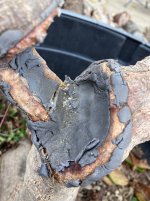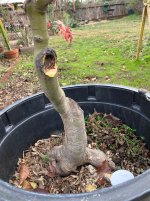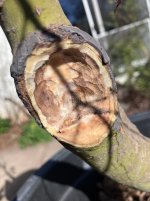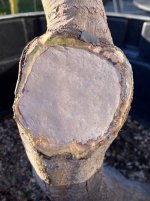n8
Chumono
Picked up this Japanese maple from a guy's yard two years ago. He was selling all of his projects to move to Louisiana, so I bought a couple in pots and he invited me back to dig up whatever I wanted from his yard because his wife (ex-wife?) didn't want them around after he left. It was kind of a weird situation that was never explained fully, but nice enough people. This and two other pretty large maples were free for the digging.
Sat on this for two years thinking I would develop with two trunks at the split and ultimately decided that one trunk was far too thick and boring, while the other has movement and interest. Using @markyscott's Ebihara post and @Adair M's pictures as a guide, I went to work on it this morning. First pic is the front and the other's are from the sides. The biggest cut here will be on the rear of the tree.
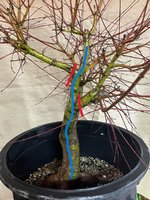
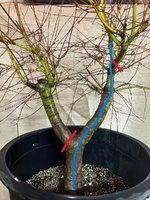
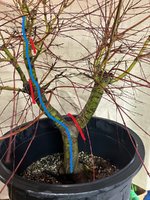
We are removing the big trunk/branch, plus two other awkward branches. Cut wedges in the two large branches for removal next year and removed the right angle branch at the top of the tree altogether because it was much smaller and should heal quickly. After sawing and using a chisel, I used a Dremel to make the big cuts slightly concave, then cleaned up the edges with a razor. I'll ultimately strip this whole trunk down and use new branches to rebuild.
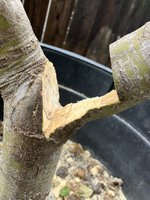
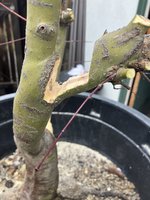
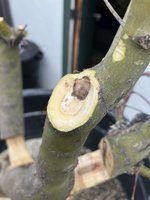
Sealed up and ready to heal. Thinking about also repotting into a box with better soil when buds start moving. I think I can pull it off. Nebari will also need some grafts at some point, so I guess I'll start more Japanese maple seedlings this year. I think this has potential.
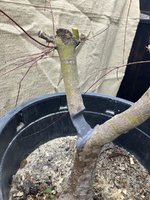
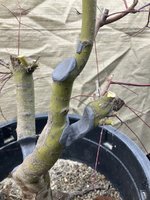
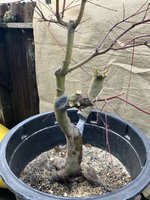
Sat on this for two years thinking I would develop with two trunks at the split and ultimately decided that one trunk was far too thick and boring, while the other has movement and interest. Using @markyscott's Ebihara post and @Adair M's pictures as a guide, I went to work on it this morning. First pic is the front and the other's are from the sides. The biggest cut here will be on the rear of the tree.



We are removing the big trunk/branch, plus two other awkward branches. Cut wedges in the two large branches for removal next year and removed the right angle branch at the top of the tree altogether because it was much smaller and should heal quickly. After sawing and using a chisel, I used a Dremel to make the big cuts slightly concave, then cleaned up the edges with a razor. I'll ultimately strip this whole trunk down and use new branches to rebuild.



Sealed up and ready to heal. Thinking about also repotting into a box with better soil when buds start moving. I think I can pull it off. Nebari will also need some grafts at some point, so I guess I'll start more Japanese maple seedlings this year. I think this has potential.





